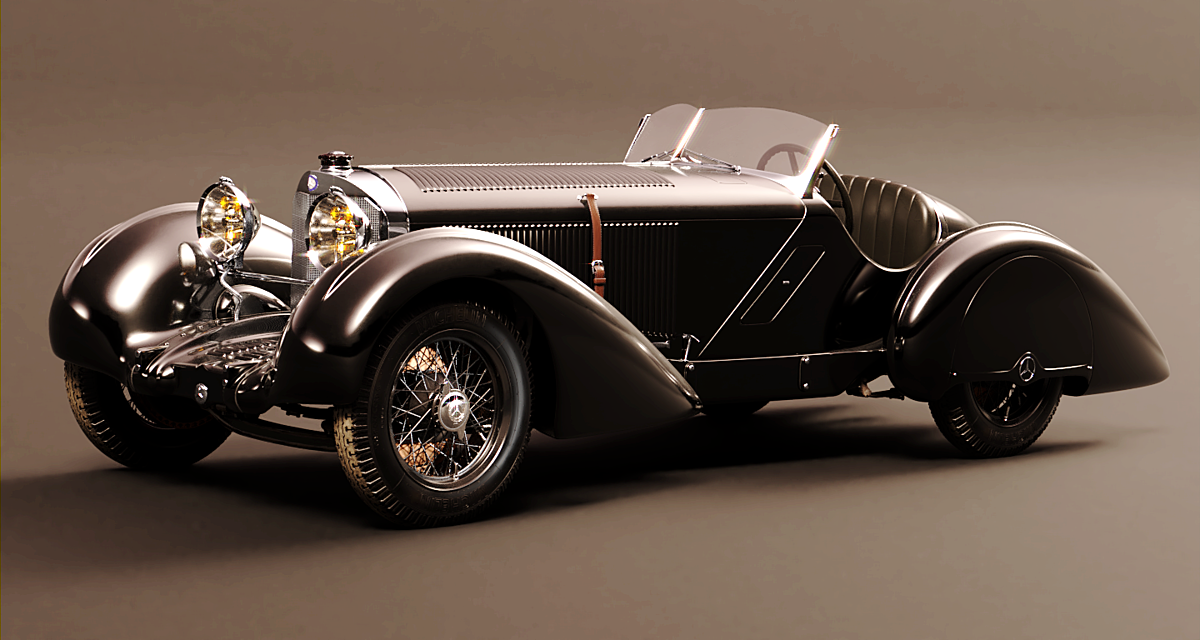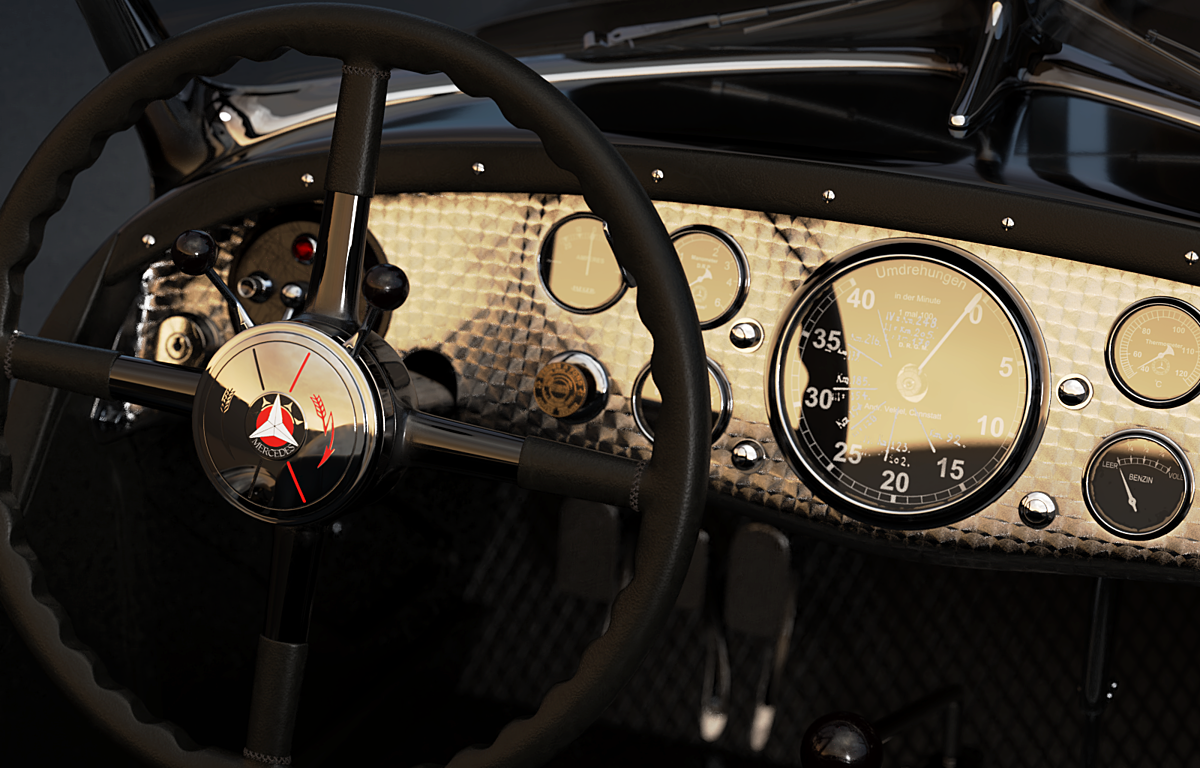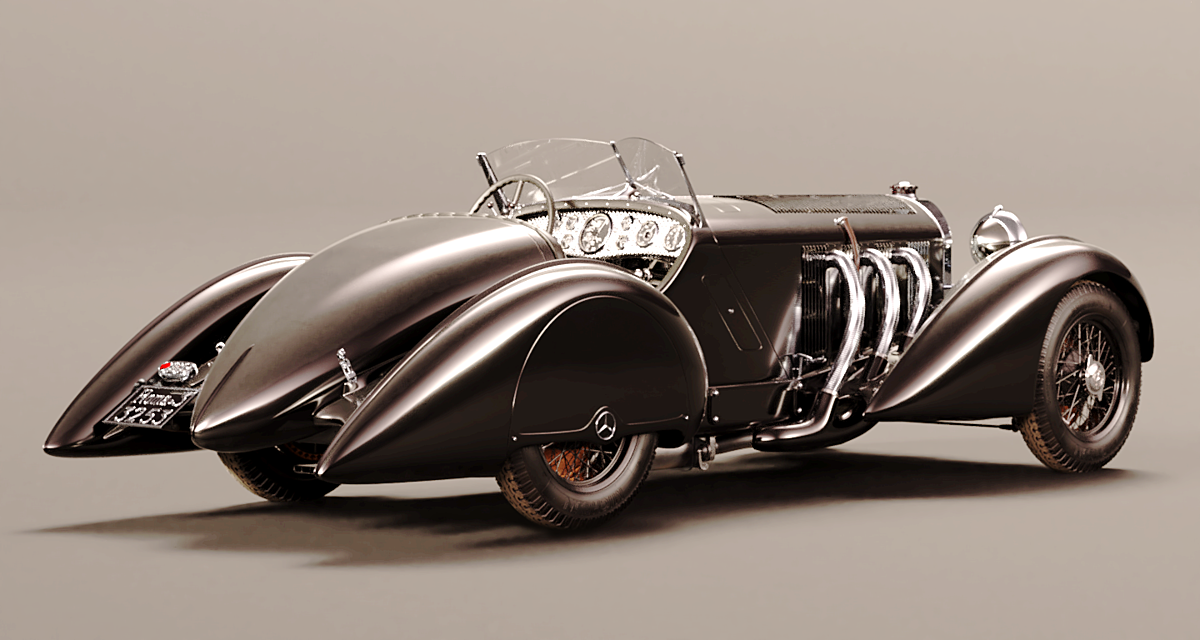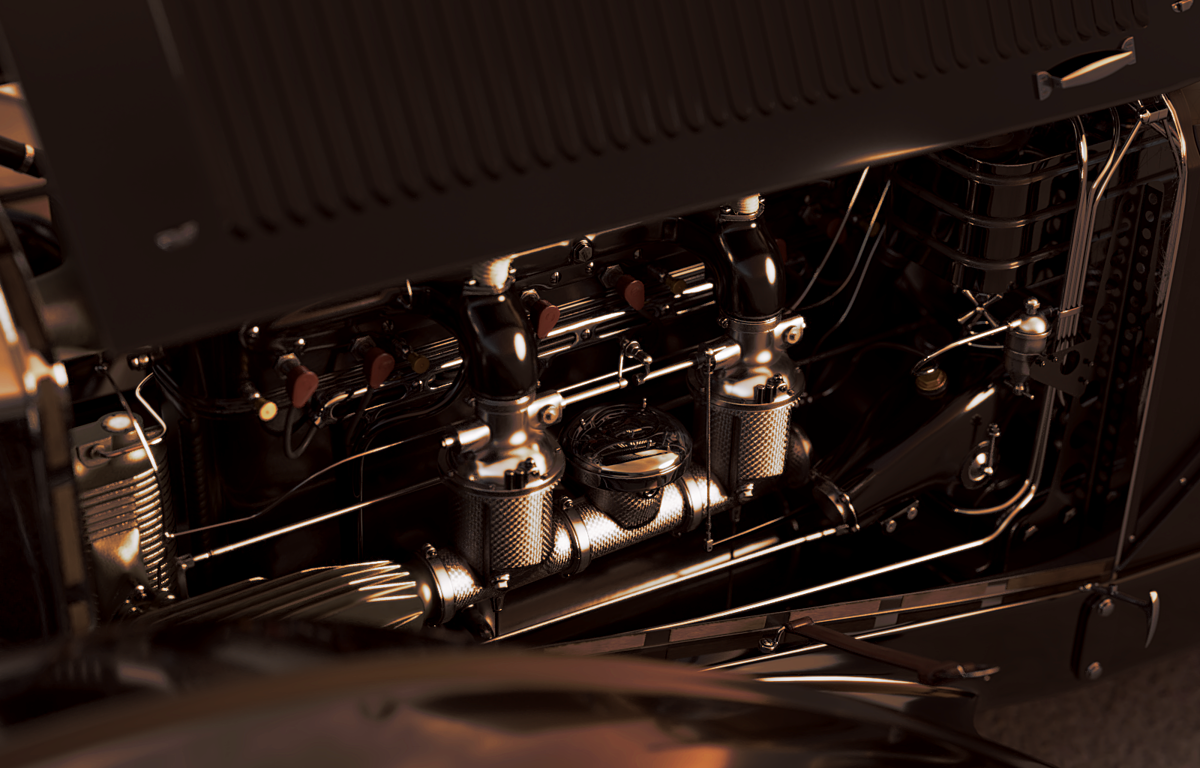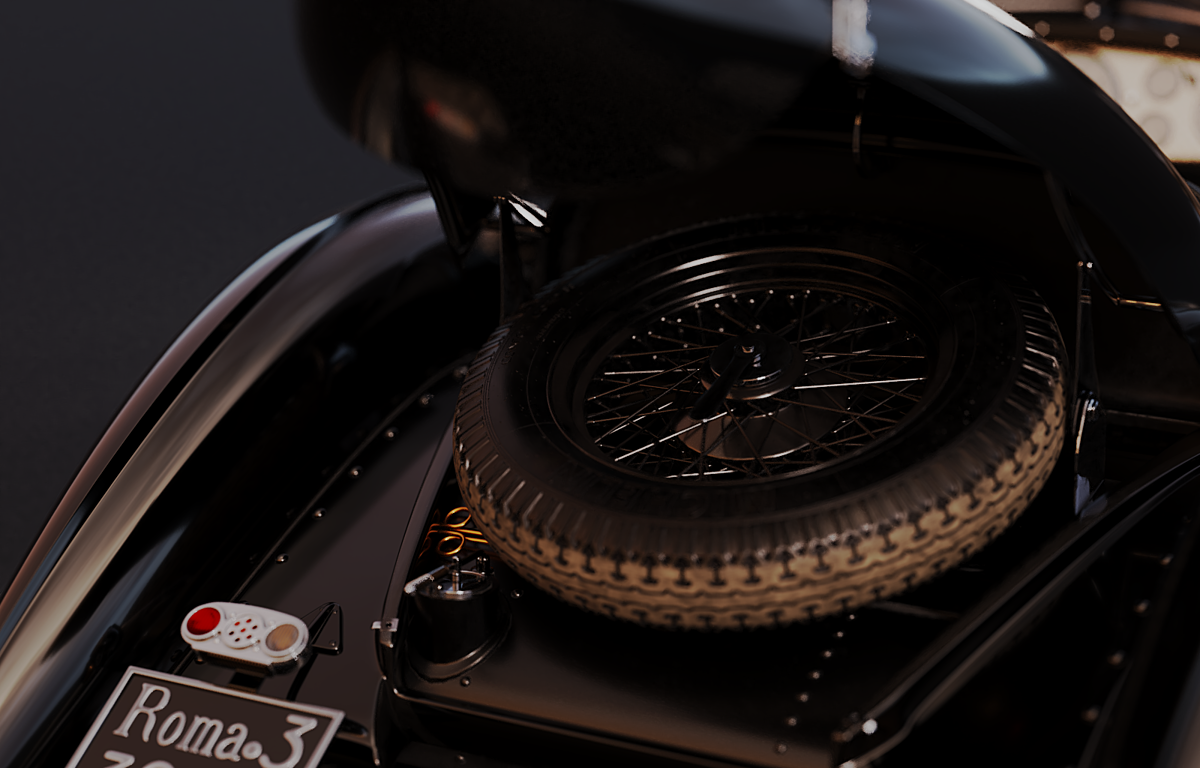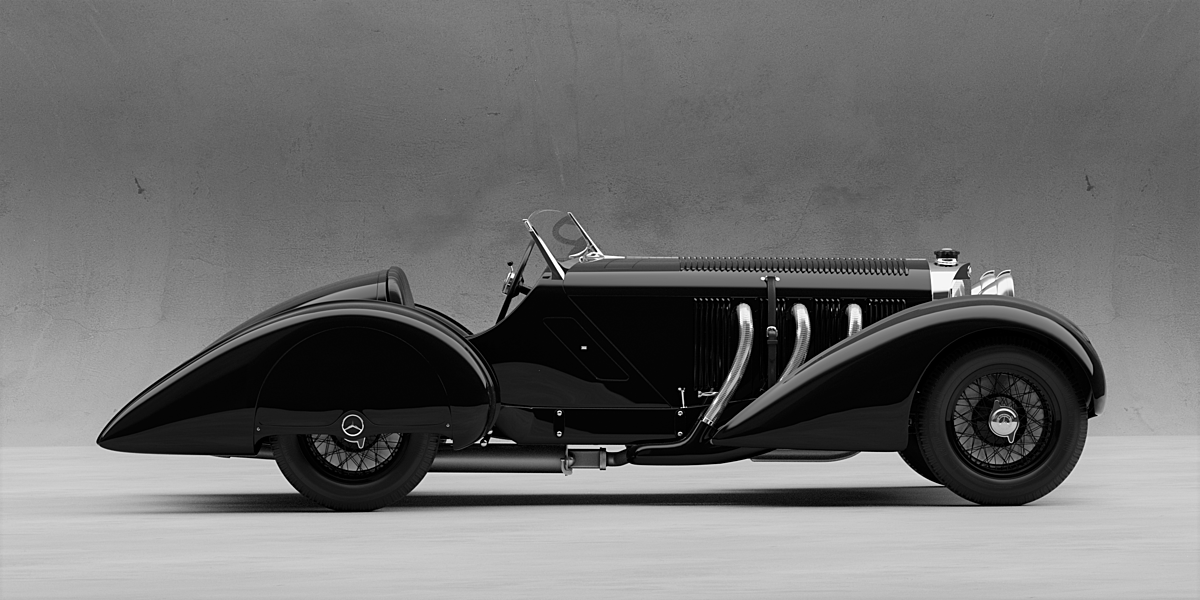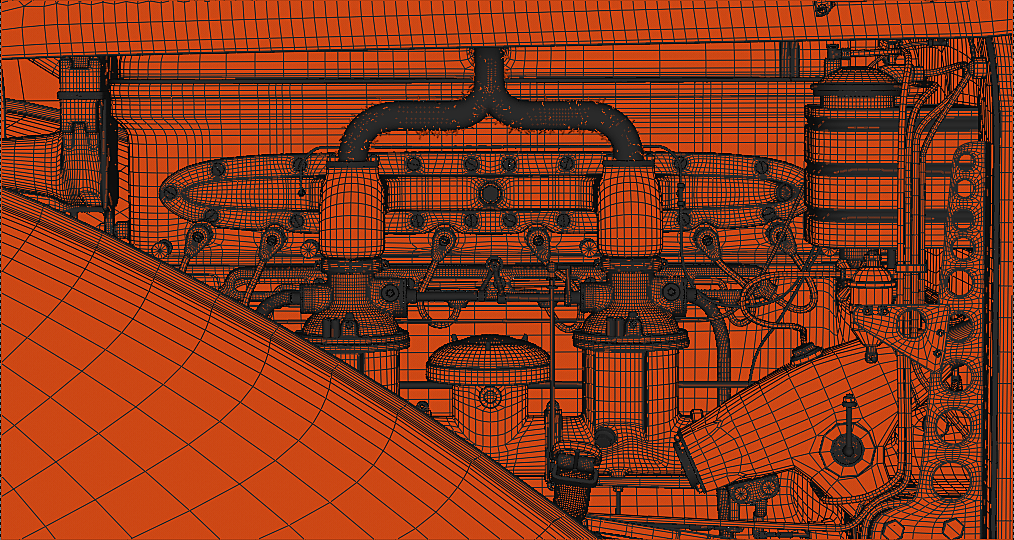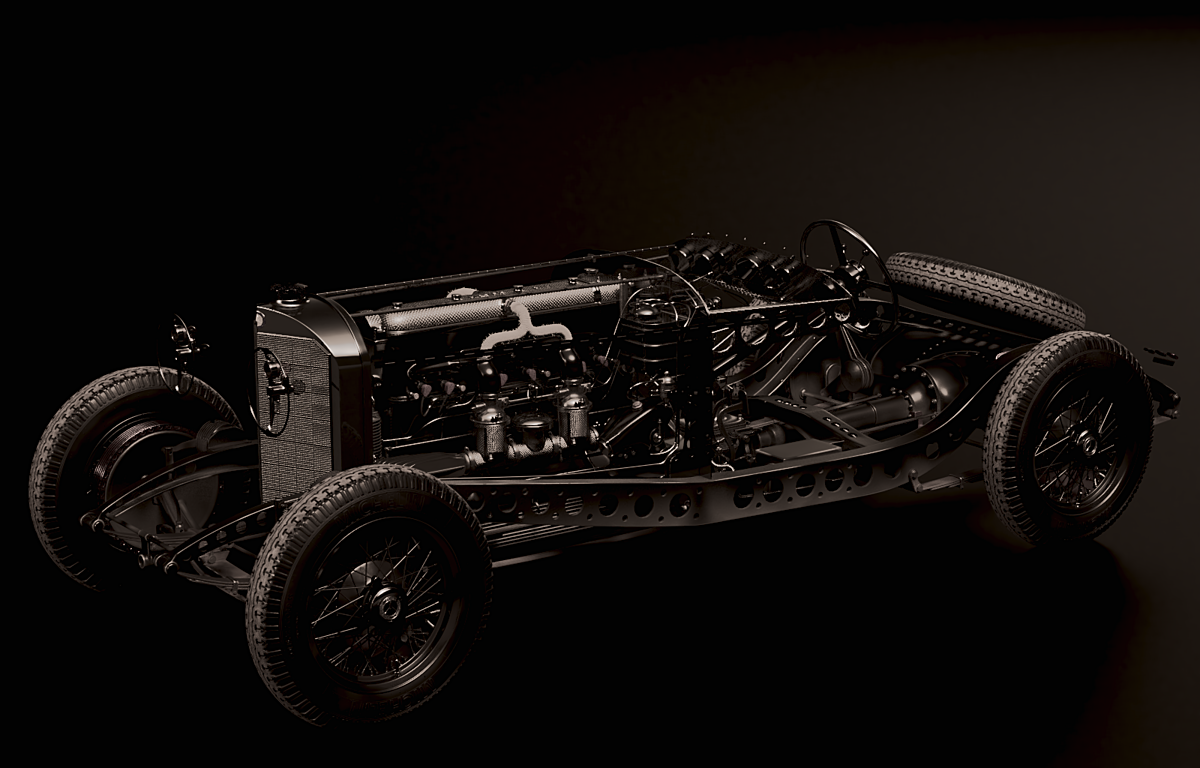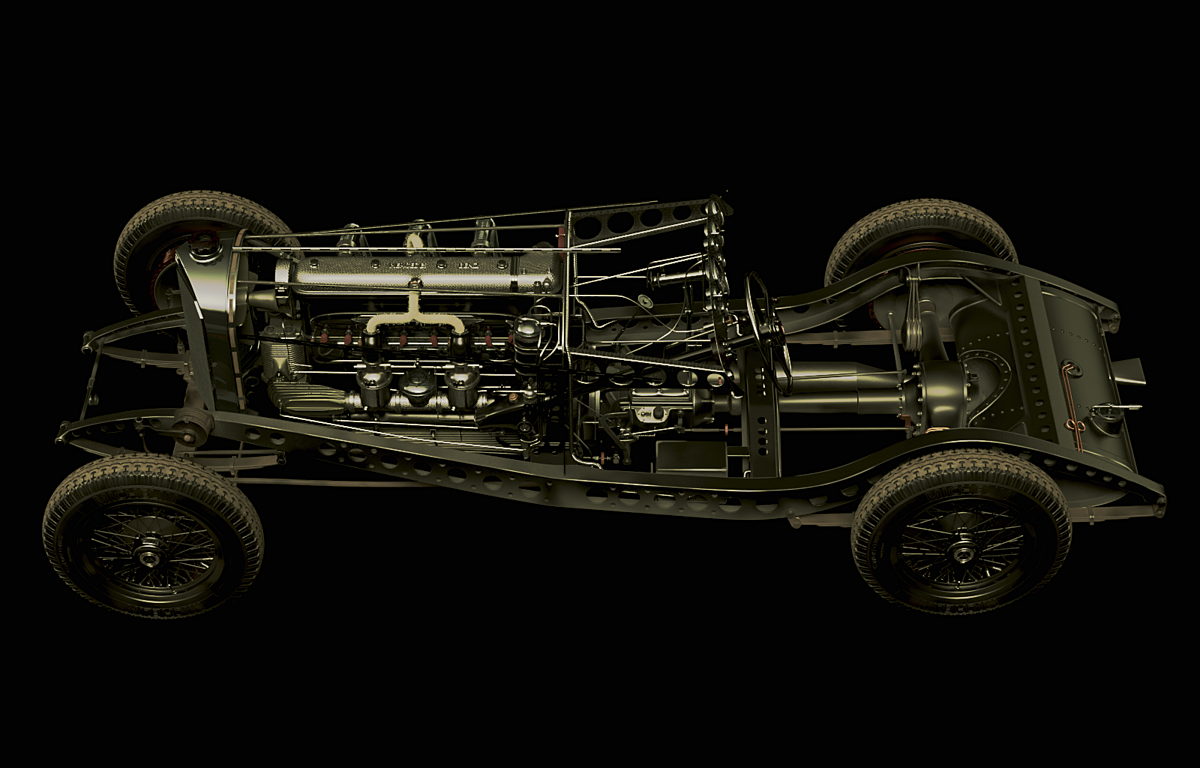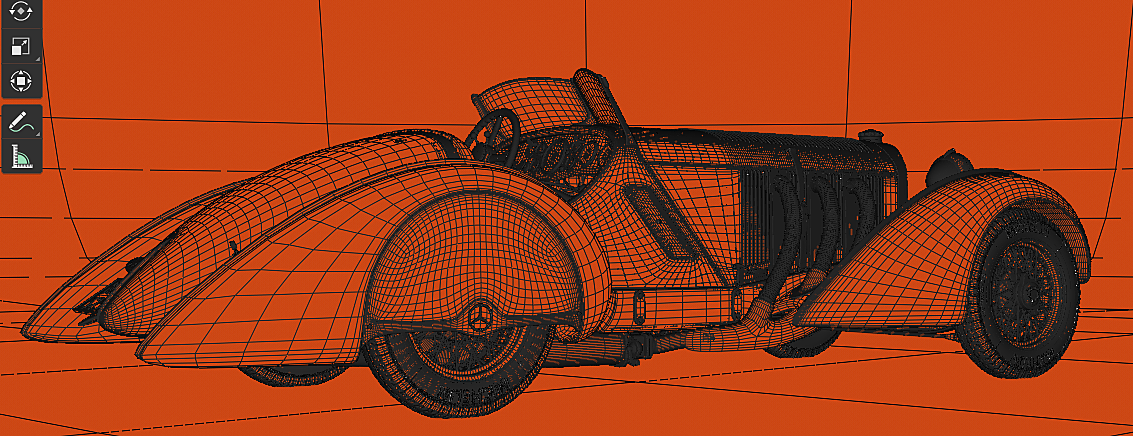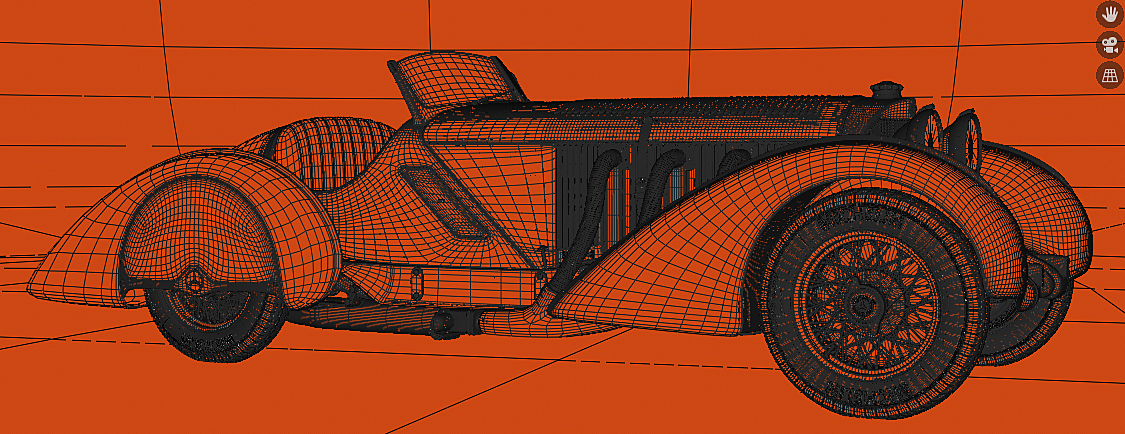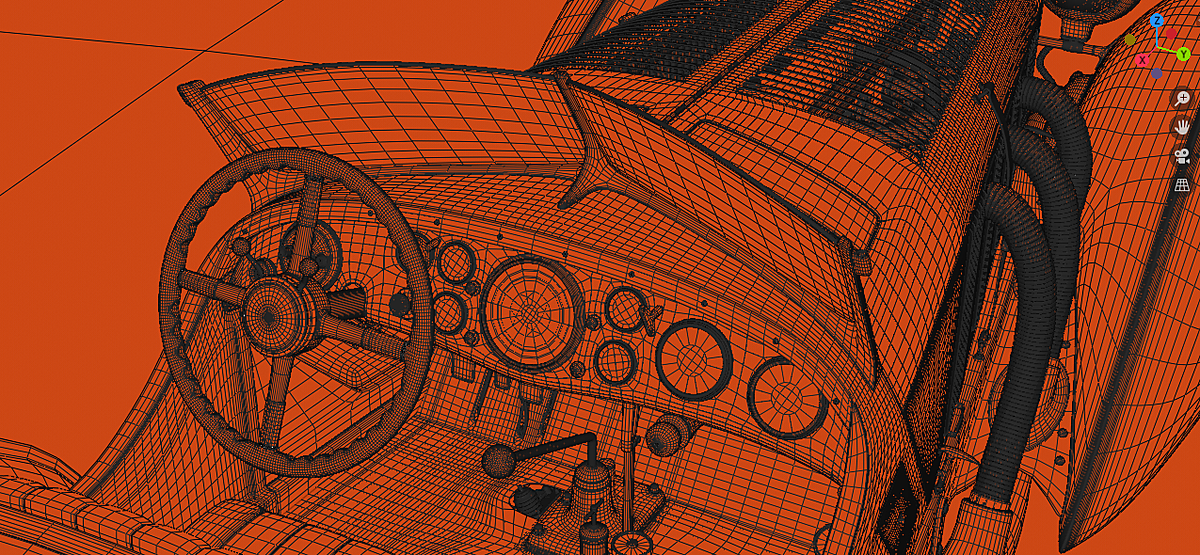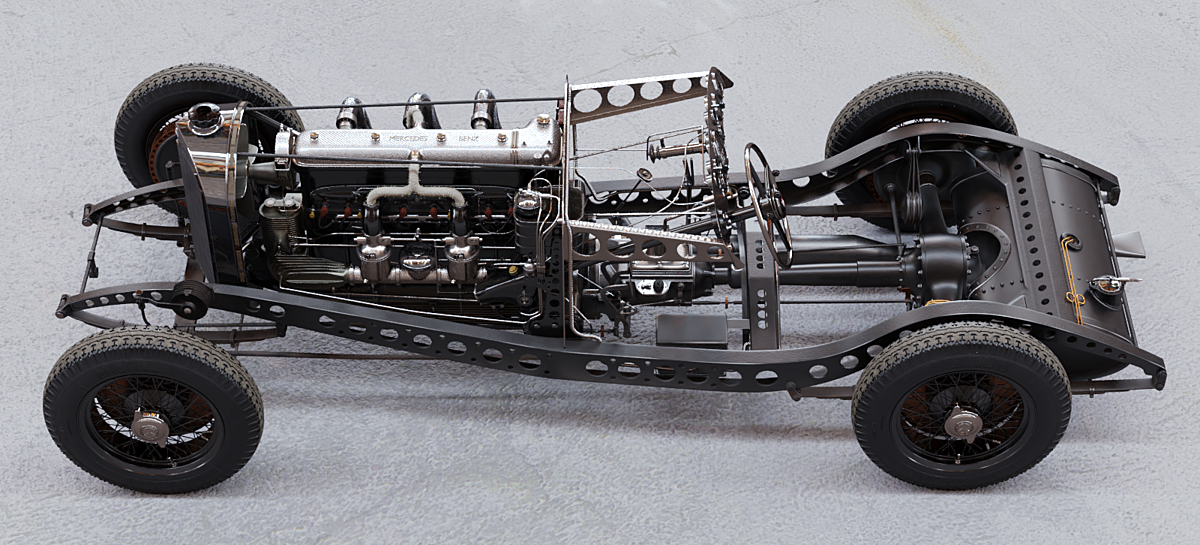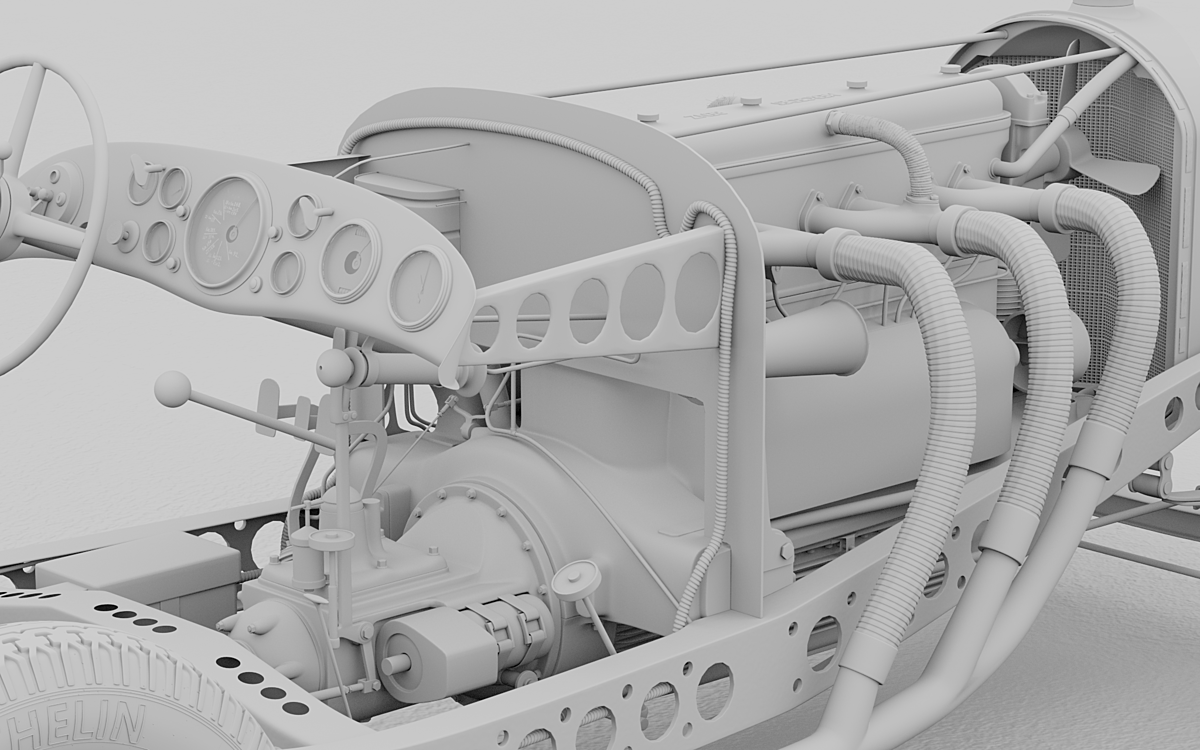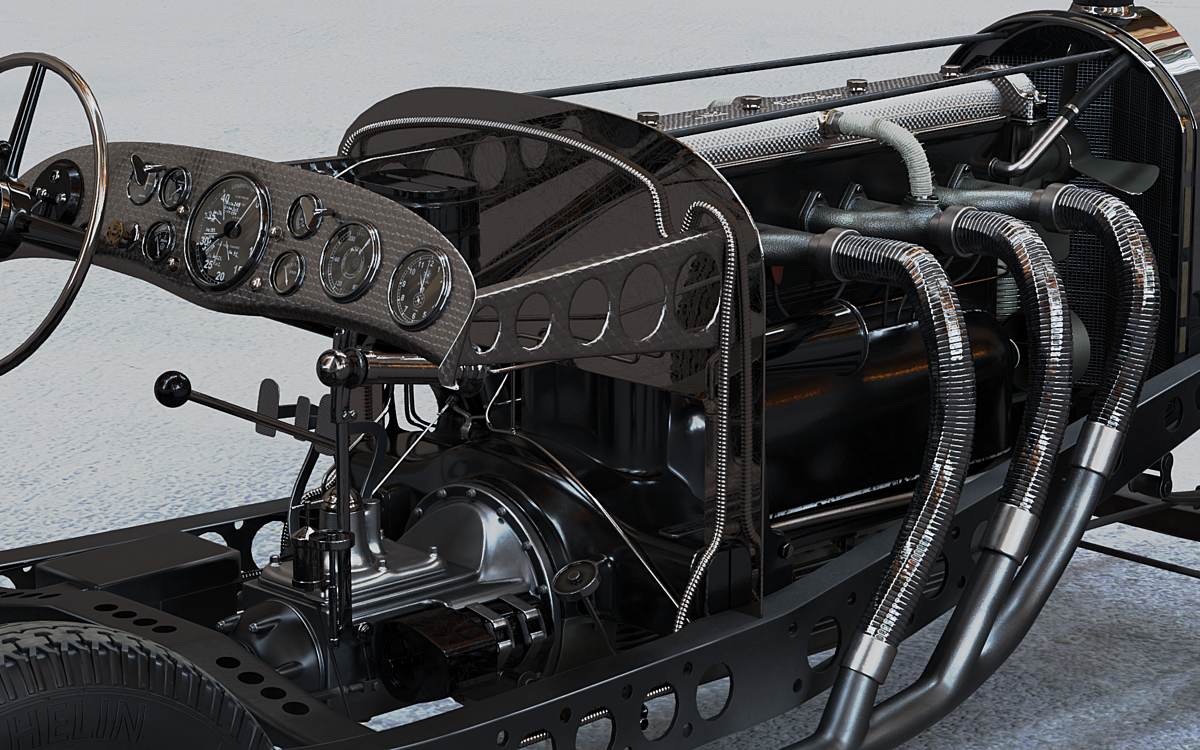Mercedes-Benz Ssk W06 1930 "Count Trossi"
SSK stands for Super Sport Kurz (Short), it was the short wheelbase version of Mercedes Motoren Gesellschafts' flagship model, the luxurious Le Mans winning Super Sport. It was made for racing, the majority of its length was taken up by the engine, leaving the driver seat on the top of the rear differential.
SS and SSK models had a huge compressor, uncommon even for luxury cars, that made these beasts the fastest street legal vehicles in 1930. The elephant blowers had a strange but unique scream when engaged, that sounded like an angry goat. SSK can be considered the predecessor of SL 300 which held the title of fastest production car in the 1950s.
In 1930 Mercedes-Benz SSK Engine No. 77644 was completed, lacking any body panels, this was common for pre wwii auto manufacturers. Mercedes-Benz dealers tried to sell it in Japan without much success. Later it was sent back to Europe where it was fitted with a Carozzeria Touring body, raced in different events by multiple owners. It was raced on Mille Miglia as well. Finally it ended up at the garage of Carlo Felice Trossi a wealthy Italian businessman and motor vehicle enthusiast. He decided to go fancy with the styling and give the current "Black Prince" look to the car.
The bodywork is thought to be made in Britain by a craftsman named Willie White (based on a drawing showing a coupe that is literally a batmobile). Whites' drawing and a sketch made by Trossi can be found on the homepage of Paul Russell and Co. the famous automobile restorer company responsible for putting this verry piece back to road. Some believe it is a work of Jacques Saoutchick. It is one of the earliest streemline art deco body, the famous Talbots, Delahayes and Bugattis that mark the car styling of the era, are all produced somewhat later. One that takes a look on the famous Autobahn Kurier, cannot deny its resemblance to the Black Prince. Whoever made the styling, was a real influencer. The Black Prinze SSK is part of the Ralph Lauren car collection.
The model presented here is a recreation of the classic Mercede-Benz model based on hundreds of reference photographs and technical drawings. Sources range from the Mercedes-Benz Classics Center official photo galery through the webpage of professional scale model makers (Misko Models, CMC) to professional (e.g. Michael Furman) and amateur photographers posts. For some details it took years to find any reference.
None of the photographs were used directly, e.g. as textures. From badges through labbels to gauges everithing was newly created in Blender. Geometric data was extracted through evaluating the vanishing points of the images either manually (relaying on the handbook "The complete guide to perspective" by John Raynes) or using Fspy.
The aim was the creation an accurate model that has every detail, an automobile enthusiast would like to see. It is both a collectors item and a detailed model for professional users. The model has details that are not standard for a 3d model for sale, including undercarriage and engine. Popping up the hood to reveal the engine bay is always one of the peak points of TV shows on hot rods and classic cars and I wanted to include this user experience in the package.
Textures, materials and the meshwork was optimised for both Cycles and Eevee. To display the model in Eevee a powerfull graphics accelerator and at least 32Gb RAM is recommended. The model was optimised for still images, therefore contains armatures for the opening of the hoods and trunk, as well as for posing the suspensions together with the steered wheels.
The vertex count with the wiewport optimized Catmull-Clark subdivision set is roughly 3 million, (including body elements, engine, interior parts, undercarriage, and wheels). Except for the rivets and the ball shaped gearshifter handle the model is all quads. The aforementioned parts are icospheres that are better models of globular structures than UV spheres, and tolerate subdivision better despite beeing all tris. The zip file contains a texture atlas of 100+ textures. Many materials (carpaint, leather) are working through. procedurals. Materials are centered around a Principled BSDF node therefore they can be baked and used in other PBR systems. The objects in the scene 350 in total are groupped to collections that correspond to UV layouts, the objects in the same collection share the same object color whose hex code is in the name of collection. In order to go further with the textures in e.g. Substance packages i recommend the export of these collections as separate FBX files. Low poly models can be made by retopologizing this meshwork to the desired poly count and baking LOD-s from the full detail model. In my opinion in PBR workflow texturing and materials are highly deterministic in terms of final look, but the most time consuming is the creation of the high poly mesh to bake the normals from.
Roughly 300 hours went into modelling while roughly 80 hours for texturing (and this included the production of procedural generators). The original car is painted black with leather upholstery in the same color, but the carpaint and the procedural leather was optimised to match any color you wish. The car paint can be switched to sparkling metallic type (based on a procedural normal map, the way Arnold, V-ray and Substance carpaints work). Pleiochroism is also simulated. The leather texture has cracks whose intensity and size can be adjusted separately, there are three color inputs in total to be able to mimick wear. The current setup is brand new black leather finish.
Please feel free to contact me with your requests or questions regarding the model.

